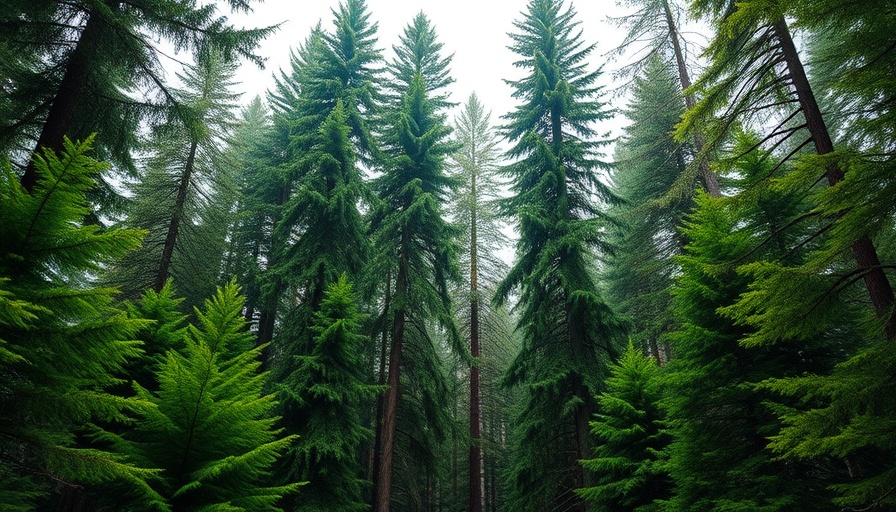
A Deep Dive into the History of Cook Forest State Park
Cook Forest State Park is more than just a beautiful landscape in northwestern Pennsylvania; it's a cherished slice of our national heritage. Its sprawling expanse of over 8,500 acres, rich in old-growth forest, invites visitors from near and far to explore its serene beauty and learn about its extraordinary history. The park’s past is a narrative filled with moments of conservation triumph, familial ambition, and the strength of community action.
The Indigenous Roots and Early Settlements
Long before settlers established homes, the area served as the hunting ground of the Seneca Nation, part of the Iroquois Confederacy. The indigenous peoples respected the land's resources, recognizing its value for sustenance and culture. However, European interests began to encroach upon these territories in the mid-18th century when Moravian missionary Christian Frederick Post sought to recruit the Seneca for the British in the French and Indian War. This marked a significant turning point that would lead to English claims over indigenous lands. In 1826, John Cook made his mark as the first American settler, laying the groundwork for what would eventually become a hub of timber activity.
A Legacy Built on Lumber: The Cook Family’s Impact
John Cook was more than just a settler; he was a pioneer who harnessed the region’s resources. By establishing sawmills and floating timber down the Clarion River, he paved the way for industry in the area, a legacy carried on by his son Anthony. The family’s timber operations flourished, and they expanded their influence by creating various facilities, leaving an indelible cultural footprint. This industrial legacy illustrates how the human spirit can transform nature’s bounty into thriving enterprises, though it would also set the stage for future conservation efforts.
Conservation Takes Root
As timber operations continued, the landscapes changed dramatically, prompting concerns among conservation advocates. In the early 1900s, Major Israel McCreight's realization of the area's ecological significance marked a pivotal moment. His dedication to preserving the majestic stands of virgin white pine and hemlock rallied support for conservation. It was through civic engagement that the Cook Forest Association was born in 1923, demonstrating the power of community action as they struggled to save the land from further exploitation.
The Establishment of Cook Forest State Park
After years of fundraising and advocacy, December 1928 saw a monumental achievement: the Pennsylvania state government acquired approximately 6,055 acres from the A. Cook Sons Company. This acquisition made Cook Forest the first designated state park in Pennsylvania to protect a natural landmark, forever altering its trajectory. The park’s foundation was built on the community's shared vision of conservation, and it set a historical precedent for government involvement in safeguarding natural spaces for future generations.
Echoes of History: The Civilian Conservation Corps
In the 1930s, the realities of the Great Depression catalyzed the arrival of the Civilian Conservation Corps (CCC). Their work helped shape the park's infrastructure, choosing to build essential facilities like trails, camps, and cabins—many of which still stand today. These structures, crafted from salvaged American chestnut, are remarkable not just for their architecture but for their historical value, earning recognition on the National Register of Historic Places.
Preserving Nature’s Grandeur: The Fire Tower Legacy
The park is also home to a historical fire tower, which was established in 1929. Standing 87.5 feet tall, this tower played a crucial role in forest fire detection until 1966 and symbolizes the ongoing commitment to forest management and conservation in the area. Today, visitors can even participate in guided tours to learn about its heritage and enjoy breathtaking views from the top, showing that our connection to the past can be both educational and exhilarating.
The Present: A Commitment to Conservation
Today, Cook Forest State Park continues to be revered for its old-growth forests, with towering white pines, eastern hemlocks, and northern hardwoods flourishing within its boundaries. This natural oasis serves not only as a recreational space but also as a laboratory for ecological research and conservation efforts. As we tread the paths of this historic park, we are reminded of the collective actions that shaped it and the ongoing responsibility we hold for its preservation.
Why Cook Forest Matters to Pennsylvania
For both residents and visitors, Cook Forest State Park is not just a collection of trees; it’s a narrative of resilience and stewardship. As we explore its trails and witness its stunning landscapes, we connect with a history that carries lessons of respect for our environment. The park stands as a testament to what can be achieved when individuals unite for a noble cause, encouraging us all to cherish and conserve the natural beauty that surrounds us.
The next time you're planning an outing in Pennsylvania, consider visiting Cook Forest State Park—not just for its natural magnificence but to celebrate a legacy that began centuries ago and continues to thrive today. Explore this magnificent landscape and contribute to the ongoing story of preservation through your respect and enjoyment of the great outdoors!
 Add Row
Add Row  Add
Add 




Write A Comment